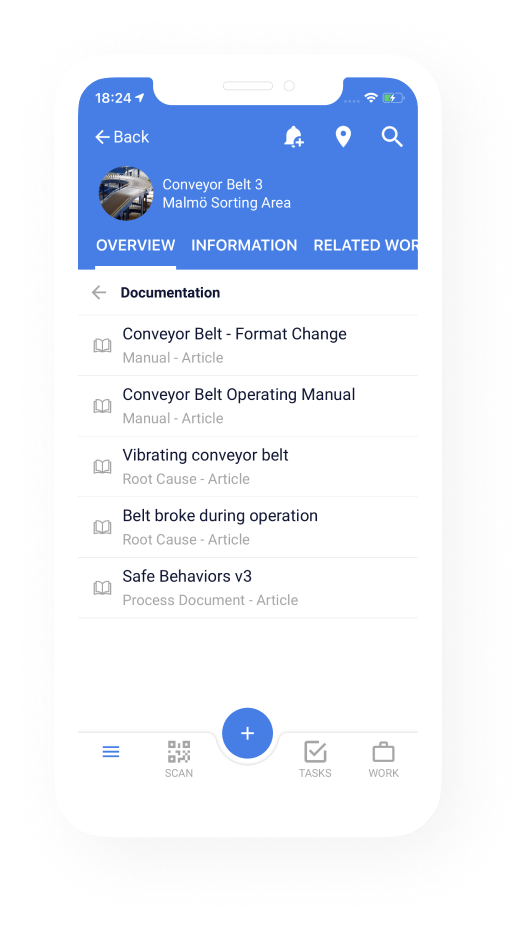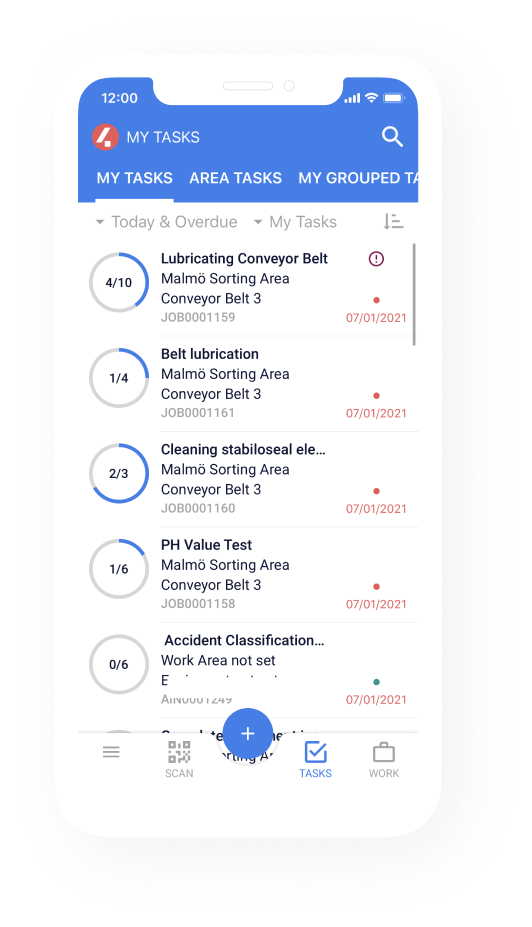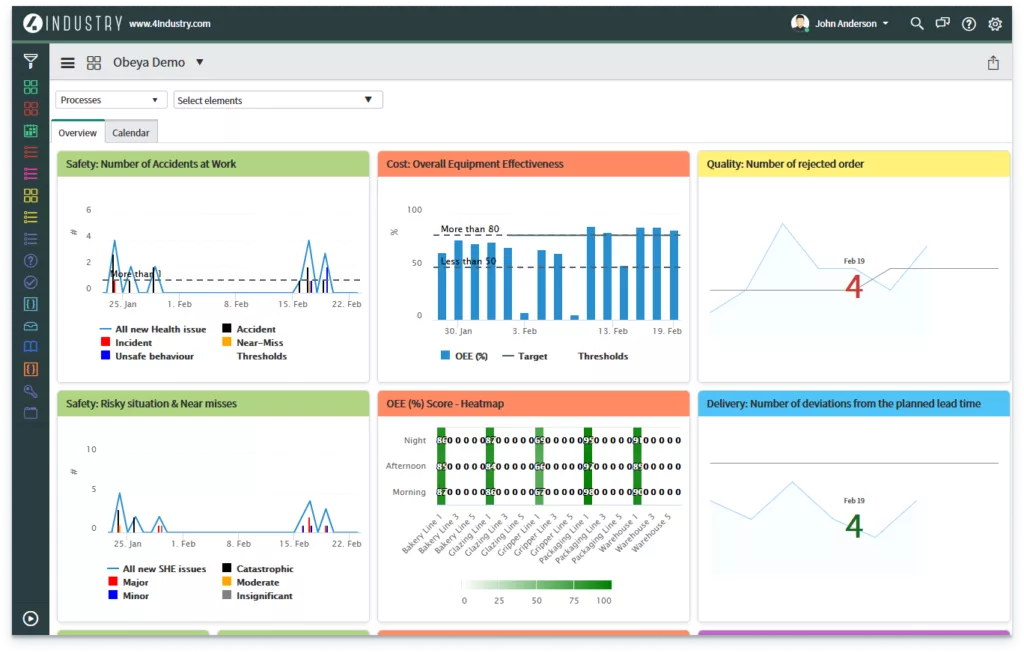
Why Paperless Manufacturing is the Way of the Future
46% of all manufacturers believe that going to a paperless manufacturing operation would be the biggest productivity improvement.

Today, roughly 62 percent of manufacturers use pen and paper to track important manufacturing processes, while 46 percent believe that removing paper would be the biggest productivity improvement. Despite the fact that nearly half of manufacturers want to remove paper, why does the vast majority still use it?
Paper is universal, portable and familiar — but that doesn’t mean effective digital alternatives don’t exist. For example, many connected worker platforms are user-friendly and mobile-first, and they overcome all the traditional pitfalls associated with manual, paper-based processes.
The Five Issues With Paper in Your Factory
Here are just some of the reasons why it’s worth eliminating paper-based processes in manufacturing facilities:
- Paper processes waste time. Whether workers are transcribing information — e.g. copying email notes to an Excel spreadsheet — or they’re fetching knowledge items, valuable time is being wasted on the shop floor. As it stands, workers spend roughly 20-percent of their time looking for and collecting information. And while many facilities do employ paperless tools like Excel, Access or SharePoint, these applications fail to eliminate the underlying issue of having to search through existing digital files for the relevant knowledge.
- Paper processes are subject to human error. The process of manually transcribing or inputting information into spreadsheets, emails or other applications is subject to human error. As a result, supervisors may not have an accurate picture of what’s happening in the plant.
- Paper may be outdated. In addition to searching for and fetching knowledge items — which is a task in and of itself — workers have to worry about obtaining the correct version of the document. Imagine leaving your workstation, running to the control room to find a standard operating procedure (SOP), printing the document and then returning to your station, only to realize the document in your hand is outdated.
- Wasted paper is bad for the environment. Having to print out hundreds of pieces of paper on a daily basis has environmental implications. Unfortunately, even digital file formats like spreadsheets and PDF documents retain this issue.
- Paper isn’t allowed in some environments. Depending on the application, the presence of paper can be detrimental to operating equipment. If you work in a cleanroom, for example, you may not be allowed to have paper documents, as paper runs the risk of particle generation.
In addition to these points, it’s helpful to be able to go back in time and explore data that is five or even 10 years old — something that is difficult to do with paperless tools like Excel. Manually combing through individual spreadsheets is time-consuming, and Excel itself changes every few months, making data mining a challenge. And of course, these files are easily corruptible and prone to human error, leading to a loss in potentially critical data and knowledge.
The Three Benefits of Paperless Manufacturing
Whether you use pen-and-paper processes for all or some of your manufacturing steps, connected worker platforms are a simple way to transform your shop floor into a true paperless manufacturing operation. Here are some of the benefits you can expect:
1. Enjoy an interactive and searchable knowledge base.

Connected worker platforms gather all SOPs, checklists, technical manuals, assessment data, safety measures, and other items into one comprehensive and ever-expanding knowledge base. These tools then make these various resources instantly available to workers from anywhere on the shop floor using a smartphone or tablet — even if an internet connection isn’t available. As a centralized database, connected worker platforms also display the latest and most up-to-date information regardless of shift or factory location, and they eliminate the need to switch between multiple software applications.
2. Manage deviations quickly and effectively

In plants that utilize paper-based processes, operators have to register deviations and other issues manually, whether by writing the issue down on paper, cards or tags or by emailing their supervisor. Either way, the issue can get easily lost in an email inbox or on scraps of paper. In many cases, only the most important issue grabs the supervisor’s attention, preventing smaller issues from ever getting addressed.
On the other hand, paperless manufacturing with connected worker platforms lets workers register, analyze and solve equipment deviations much more quickly. These tools feature easy-to-use maintenance checklists, propose countermeasures, implement root causes analyses (RCA) and display relevant items from the knowledge base — all of which are accessible anywhere. Thanks to these features, connected worker platforms reduce the time it takes to follow up on, manage and resolve even the smallest production issues.
3. Take action with manufacturing dashboards

Connected worker platforms include insightful dashboards that display key performance indicators (KPI) and other metrics in interactive, meaningful ways. Compare these dashboards with the traditional whiteboard; when setting up Obeya boards, for example, someone has to manually transcribe information, print out dozens of sheets of paper and then organize the sheets on the wall. This process is time-consuming, wastes paper and fails to display information in any valuable way.
Digital dashboards, on the other hand, make these processes faster and more efficient by providing visibility into deviations, health and safety issues, assessments and assigned tasks. At the end of every shift, you now have a complete picture of what’s happening in your plant, and you can easily input queries to measure things like:
- The number of new, open, and closed deviations
- The average close time of health and safety issues
- Average assessment scores and response rates
- Assigned ad-hoc jobs
- Open RCAs by failure mode — and much more
Go Paperless Today
Pen-and-paper processes make it difficult to see and understand manufacturing data — let alone act on it. Connected worker platforms overcome these issues, enabling you to unlock a true paperless manufacturing operation.
Related Articles

Digitize your inspections, audits and checklists

4Industry targets Nordic market via strategic partnership with Advania

